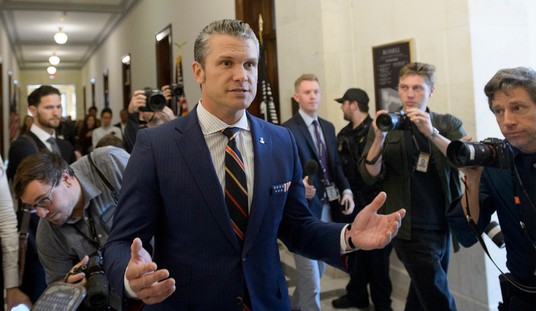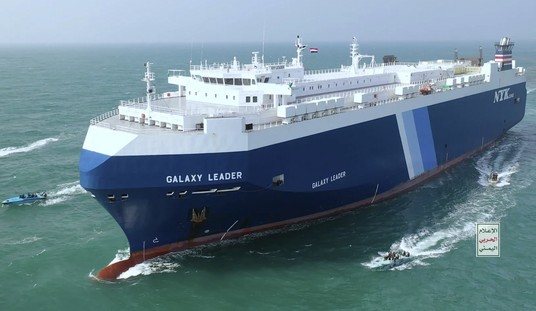The Environmental Protection Agency (EPA) introduced its final rule regarding stringent greenhouse gas emissions standards for heavy-duty vehicles, covering model years 2027 through 2032. These regulations mark a notable departure from previous standards, signaling the Biden administration’s problematic commitment to mitigating emissions in the transportation sector.
A key aspect of the new rules is the extended timeline provided to motor carriers, spanning from 2027 to 2030, to develop zero-emissions infrastructure.
However, this extension is counterbalanced by stronger emissions limits slated for 2031 and 2032. The proposed rule, aiming to transition 50 percent of vocational vehicles, 35 percent of new short-haul regional tractors, and 25 percent of new long-haul trucks to zero emissions by 2032, called for over 40 percent of all heavy-duty trucks to be emissions-free.
Under the finalized rule, approximately 30 percent of heavy-heavy-duty vocational trucks and 40 percent of regional day cabs are mandated to be zero-emission by 2032.
Maintaining its alleged "technology-neutral" stance, the EPA Phase 3 rule refrains from prescribing specific emissions solutions. The EPA pretends to be “hands-off” yet it seems impossible to achieve emissions benchmarks without integrating hybrid, battery-electric, or hydrogen-electric trucks — posing a formidable challenge.
Those solutions are themselves fraught with difficulty.
First is the issue of scalability of EV truck manufacturing. Despite the emergence of several EV truck manufacturers capable of meeting the demands for large vehicle payloads, production capacity lags behind the urgent pace of the transition to electric vehicles. In a paper released last year by Resources for the Future, the authors stated, “Manufacturers of MHDEVs must create production tools and processes from scratch. As battery technology improves, each change necessitates new equipment and vehicle configurations.” In addition, “The small number of manufacturers in each vehicle class and use category gives makers market power to keep prices high."
eTrucks operate far differently than diesel vehicles. Given the substantial loads carried by long-haul trucks, eTrucks demand enhanced power and larger, more efficient batteries to effectively transport their payloads.
Directly related to this issue is vehicle range capability. Beyond the nature of goods transported, the destinations of eTrucks are critical considerations. Ensuring adequate range or accessible charging options along their routes is essential to their operational viability.
That leads to the problem of charging infrastructure. The establishment of a comprehensive and widely accessible charging infrastructure tailored to the unique needs of EV trucks will require an entirely new network distinct from existing trucking options and from those of passenger vehicles.
One does not simply set up a charging station in the middle of nowhere. Stations must be connected to the local grid, which is a tremendously challenging and costly endeavor.
Indeed, financing the requisite infrastructure poses a significant challenge, as the initial investment for EV trucks typically exceeds that of their fossil-fuel counterparts, despite long-term cost-effectiveness.
Determining responsibility for funding and identifying avenues for cost savings through incentives and subsidies are pressing concerns.
A report by the Clean Freight Coalition (CFC) highlights the monumental challenge of electrifying the U.S. commercial truck fleet, estimating nearly $1 trillion in infrastructure investment alone. This investment includes over $620 billion from the trucking industry for chargers, site infrastructure, and electric service upgrades. However, the trillion-dollar figure does not encompass the cost of new battery-electric trucks, which can be two to three times more expensive than diesel counterparts.
So, it is no surprise that there is ample opposition to these standards.
Jim Mullen, Executive Director of the CFC, expressed concerns about the feasibility of the EPA's Phase 3 rule, cautioning against detrimental ramifications for the commercial vehicle industry and small and large businesses.
"Our members oppose the Environmental Protection Agency’s final Greenhouse Gas Emissions Regulations for Heavy-Duty Vehicles-Phase 3 rule – a regulation that will require the adoption of zero-emissions commercial vehicles at a pace that isn’t possible due to the limits of today’s technology. … The GHG Phase 3 rule will have detrimental ramifications to the commercial vehicle industry, many small and large businesses, commercial vehicle dealers and their customers.”
In an interview with Fred Fakkema, Vice President of Safety and Compliance at Zonar Systems, a fleet health and safety provider, Fakkema said:
“Fleets will ultimately determine the success of the new EPA rules, particularly given the latest standards for heavy-duty vehicles. Commercial drivers—including those in the construction industry and other work trucks, transit buses, school buses, and last-mile deliveries—face complex challenges and operating conditions as they manage the transition to a zero-emission future. They need to update processes, teams, and technology, and all this takes considerable time and investment. The commercial transportation industry needs realistic timelines and targets to contribute to the shared goal of zero emissions.”
While the final rule includes lower zero-emission vehicle rates for model years 2027-2029, the American Trucking Associations (ATA) contends that forced penetration rates in later years will restrict fleets to early-stage technologies that are still unproven.
ATA President and CEO Chris Spear says:
“ATA opposes this rule in its current form because the post-2030 targets remain entirely unachievable given the current state of zero-emission technology, the lack of charging infrastructure and restrictions on the power grid. … Any regulation that fails to account for the operational realities of trucking will set the industry and America’s supply chain up for failure."
It isn’t just trucks that will be affected. Buses will need to comply as well, generating this response from President and American Bus Association CEO Peter J. Pantuso:
"The ABA expresses grave concerns regarding the Environmental Protection Agency's (EPA) recent rule mandating a rapid shift to electric vehicles. This forced march towards electric vehicles will result in a significant increase in equipment costs, potentially doubling them. Moreover, the current lack of infrastructure and limited electric capacity make this transition impractical and financially burdensome for the industry and consumers."
Engine Technology Forum Executive Director Allen Schaeffer makes the most compelling argument: let people choose.
"Ideally, the EPA rules would be based on life cycle greenhouse gas emissions rather than a tailpipe-only basis. A life-cycle approach supports consumer choice for both fuels and vehicles. There are many paths to reducing carbon and other emissions; including further advancements to internal combustion engines and the use of renewable fuels, and new fuels like hydrogen. We envision a future where truckers can choose whatever technology best suits their needs; battery electric vehicles, hybrid electric vehicles, plug-in hybrid electric vehicles, or advanced gasoline, natural gas, or diesel vehicles.”
Far be it from government to permit choice when it can use administrative fiat to force Americans to bend to the will of the state.
Larry Meyers is a policy analyst focusing on government overreach.












Join the conversation as a VIP Member